For comparison, the $10m it cost US taxpayers to send the President on a vacation to his gold course last week is the same amount of money the entirety of the Solar System Science research and analysis program is getting this year (a cut of 82% from last year).
bsky.app/profile/batt...
30.07.2025 17:44 — 👍 9 🔁 8 💬 0 📌 0

NASA’s James Webb Space Telescope’s view of planetary nebula NGC 6072 in the near-infrared shows a complex scene of multiple outflows expanding out at different angles from a dying star at the center of the scene.
There is one stretching from roughly 11 to 5 o’clock, another from 1 to 7 o’clock, and possibly a third from 12 to 6 o’clock. These outflows push gas toward the equatorial plane, forming a disk that appears to span from 9 to 3 o’clock.
Astronomers suspect there is at least one other star interacting with the material cast off by the central dying star, creating the abnormal appearance of this planetary nebula.
In this image, the red areas represent cool molecular gas, for example, molecular hydrogen.
Stars don't go quietly into that good night. 🔭🧪
Here, a dying star is spitting itself out in all directions. A companion star nearby may be shaping the points in the splatter.
webbtelescope.org/contents/new...
30.07.2025 14:19 — 👍 29 🔁 7 💬 1 📌 0
That Bernoulli curve!
30.07.2025 12:41 — 👍 1 🔁 0 💬 0 📌 0
also: handle checks out.
29.07.2025 14:05 — 👍 1 🔁 0 💬 0 📌 0

Figure 1. Panel A: Light curve of the DWF030225.574-
545707.45 flare expressed as g magnitudes in excess of the
quiescent stellar brightness. As noted in Webb et al. (2021),
the lightcurve does not return to pre-flare brightness before
the end of the observing period. Panel B: Raw d∥ measured
on the images, relative to source position at t0. The weighted
average d ∥ of 91 reference stars, weighted by the stars’ astrometric standard deviation across the entire time series,
is shown as a grey line and the standard deviation of their
relative position itself is shown as a filled region. Panel C:
detrended d∥ of the flare star generated by subtracting the
weighted average d∥ of the reference stars shown in Panel B.
A 9-point rolling median is shown by the dashed black line.
Panel D: Rolling median over an 9-point window of the detrended data shown in Panel C, and the time series used for
subsequent analysis in this work.
Neat! @flarelord.bsky.social used ground-based photometry to measure the flare temperature on an M7 dwarf.
How do you measure temperature without spectroscopy? Trick question! You use the Earth's atmosphere as a prism and watch the star appear to jump across the sky. 🔭🧪
arxiv.org/abs/2507.19584
29.07.2025 14:04 — 👍 24 🔁 1 💬 1 📌 0
Will AI “help” to exponentiate the enshittification of the internet? Certainly! Don’t need to prognosticate on that, we’re living it.
29.07.2025 11:23 — 👍 2 🔁 0 💬 0 📌 0
How’s your jet pack lately, and your flying car? Predicting the future is hard business.
29.07.2025 11:22 — 👍 2 🔁 0 💬 2 📌 0
Actually heartbreaking, the list of colleagues that have run the show behind the scenes for so many years who are saying their pre-emptive goodbyes and taking literally thousands of years of amassed knowledge and expertise with them.
Not to mention camaraderie and community.
Morale is ... bleak.
28.07.2025 22:50 — 👍 560 🔁 191 💬 15 📌 11
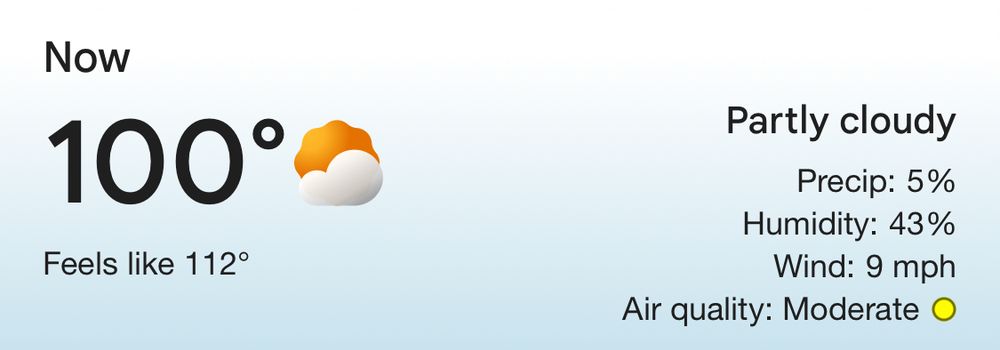
Feels like temperature is 112 F, 44 C
I love Baltimore I do I do. I really do.
25.07.2025 20:49 — 👍 5 🔁 1 💬 1 📌 0
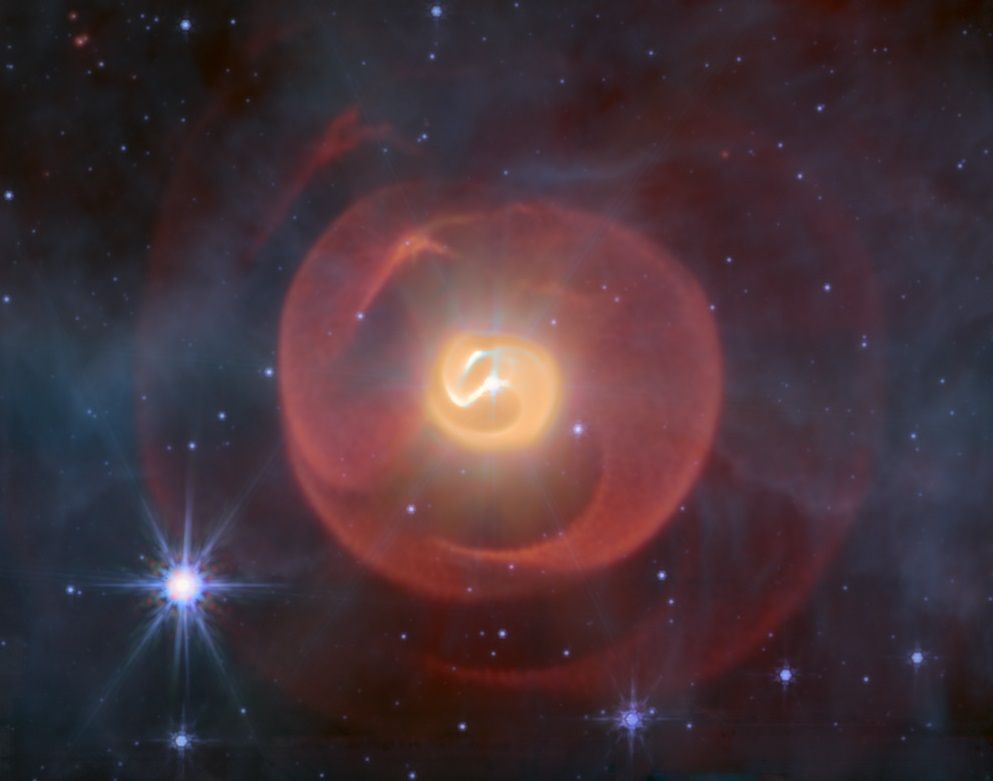
The image shows a false-colour image of the Apep colliding wind nebula as taken by the James Webb Space Telescope (JWST) in the mid-infrared. In the centre of the image, there is an orange-coloured spiral coil of dust, not dissimilar in shape from a snail's shell. There are two concentric repeats of the coil that are larger and encompass the inner shell, and these further out shells of dust are coloured red and get dimmer as they get further from the centre of the image. These far out coils of dust look somewhat like translucent spheres.
At the very centre of the image is a small spikey object which are the three stars in Apep that create and hide behind the dust shells. There are stars scattered throughout the image, each with a snowflake-like 'point spread function' that spreads the central brightness of the stars into diffraction spikes.
Image credit: Shashank Dholakia for R M T White et al 2025. 'The Serpent Eating Its Own Tail: Dust Destruction in the Apep Colliding-Wind Nebula'. PI: Yinuo Han.
Exciting news! My second first-author paper is out on the arXiv today!! arxiv.org/abs/2507.14610
We present a brand new JWST image of the Apep colliding wind binary in the mid-infrared, and we study what this nebula can tell us about the THREE stars in it's centre. Read on for more... 1/?🔭🧪
22.07.2025 11:38 — 👍 392 🔁 77 💬 13 📌 13
No more universe for you. 🧪🔭
23.07.2025 20:32 — 👍 34 🔁 15 💬 2 📌 1
Here's the 3D, narrated movie version: youtu.be/_QvlRH-q0nw?... 🔭🧪
23.07.2025 17:11 — 👍 15 🔁 5 💬 1 📌 0
listening to my recently acquired Rumours on vinyl and questioning the mixing choices made on the 2013 Super Deluxe remaster and realizing:
I'm a dad.
21.07.2025 12:39 — 👍 4 🔁 0 💬 0 📌 1

Israeli Troops Kill Dozens Near Border Crossing, Gaza Health Officials Say
Hungry people being slaughtered. We can’t allow this to be normal.
Gift link: www.nytimes.com/2025/07/20/w...
20.07.2025 14:31 — 👍 2 🔁 2 💬 0 📌 0
Yes! All observations will be publicly available immediately to anyone with internet access and an email address. We’re building a managed Jupyter environment on AWS, so anyone can can access and explore the full set of observations on their laptop.
19.07.2025 11:17 — 👍 1 🔁 0 💬 1 📌 0
Very grateful to do it, Ben. 🙌
19.07.2025 11:13 — 👍 2 🔁 0 💬 0 📌 0
I can’t teleport you to Maryland. But I can work every day to ensure you* have easy access to data analysis and visualization tools for Roman data in the cloud. And I will.
*these are free to everyone, everywhere, always #astrocode
19.07.2025 11:08 — 👍 5 🔁 0 💬 2 📌 0
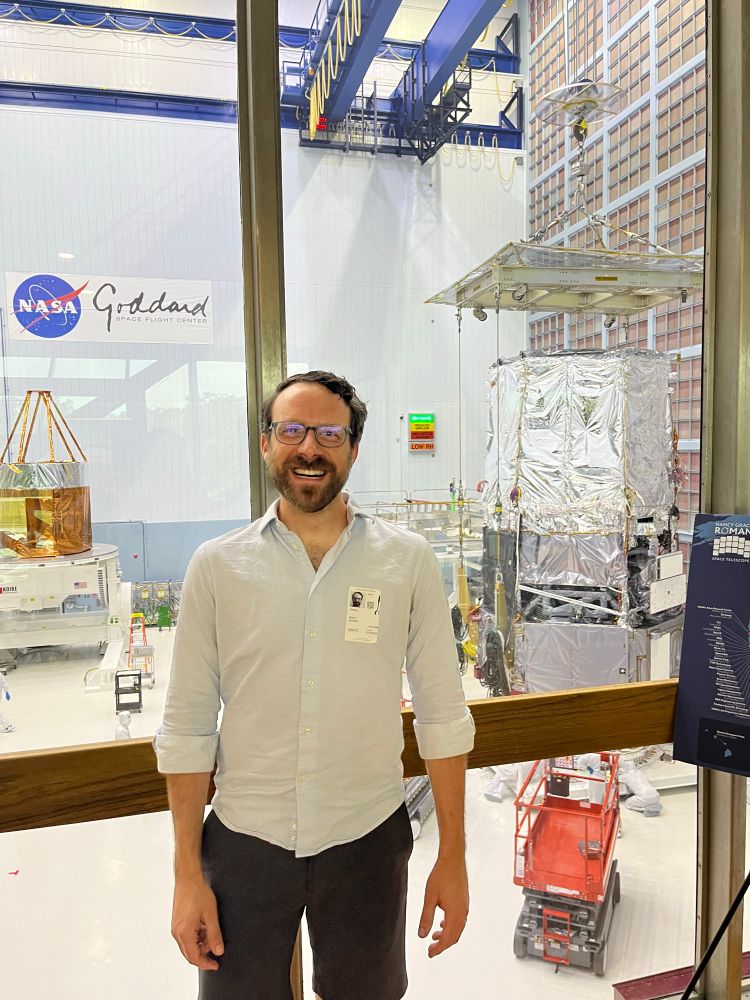
Brett standing in front of a window overlooking the big clean room at NASA Goddard, where spacecraft are assembled. The Roman Space Telescope is behind Brett to the right.

The Roman Space Telescope, without its solar array, and with a foil covering for thermal vacuum testing.

The Roman Space Telescope solar array.
To the right you’ll see the Roman Space Telescope at NASA Goddard yesterday, and me! 🧪🔭
This is the first space telescope that I’ve supported before its launch. If you can’t tell by my face, I really hope it won’t be the last.
Last time I visited this clean room, it held JWST 🥹
19.07.2025 10:51 — 👍 46 🔁 3 💬 3 📌 0
The first photos from the Vera Rubin Observatory are stunning — thanks in part to the University of Arizona, which helped build its mirror. Proud to see Arizona leading the way in space science.
17.07.2025 23:35 — 👍 694 🔁 86 💬 8 📌 5
Bold move by Texas to say that the First Amendment only applies during daylight hours.
16.07.2025 16:10 — 👍 2596 🔁 1034 💬 73 📌 119
Scientists have released the closest images ever taken near the sun, captured by NASA’s Parker Solar Probe flying 3.8 million miles above the solar surface.
See more images of solar eruptions on the sun: wapo.st/3Irm3P3
15.07.2025 13:27 — 👍 11018 🔁 2027 💬 322 📌 200

Atmospheric Escape and Replenishment in Planetary Systems Workshop
Abstracts close this Friday for the Fall 2025 STScI Science Workshop on Atmospheric Escape and Replenishment. We'd love to see you in Baltimore in November!
Check it out and let me know if you've any questions. 🔭 #exoplanets
www.stsci.edu/contents/eve...
14.07.2025 16:38 — 👍 9 🔁 2 💬 0 📌 0
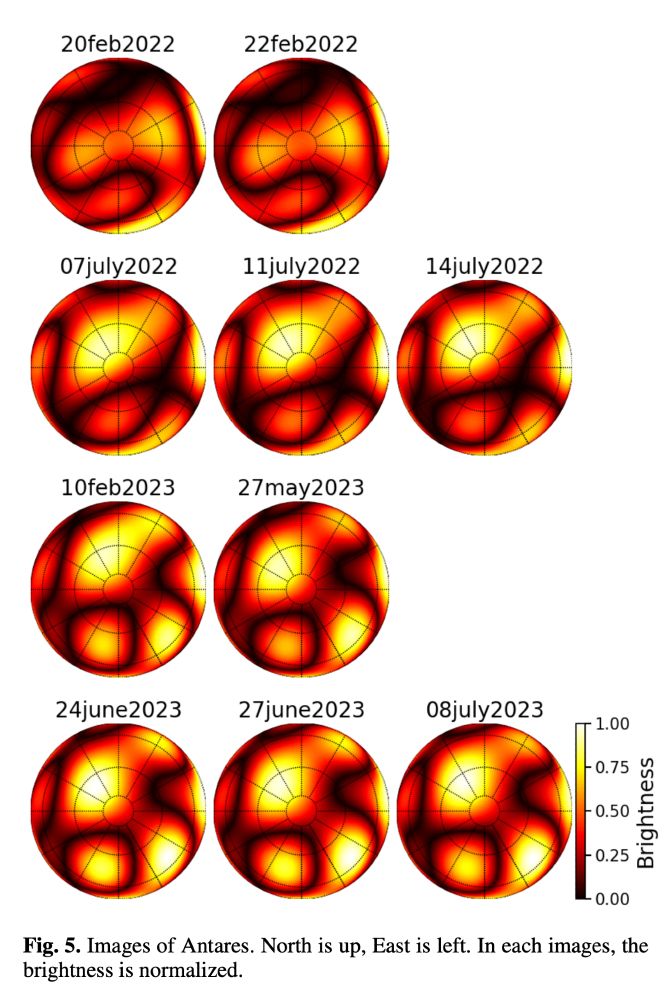
Relative brightness maps of Antares over the course of a year, showing the changing brightness and shapes of convective cells in the stellar photosphere.
The brightest star in Scorpius, Antares, is nearing the end of its 15 million year life. It's so large that the orbits of Mercury, Venus, Earth and Mars would be inside the star. 🔭🧪
Pilate et al. published brightness maps of the star, showing gigantic convective cells.
arxiv.org/abs/2507.08614
14.07.2025 13:21 — 👍 48 🔁 6 💬 2 📌 2
Absolutely perfect, no notes.
13.07.2025 01:24 — 👍 2 🔁 0 💬 1 📌 0
I'm a professor at the flagship university for the fourth whitest state in the US. Over 80% of our students are white.
The biggest barrier to access here is that due to lack of state funding, we have top 10 highest tuition per capita of public unis in the country.
We also have a food pantry.
12.07.2025 12:10 — 👍 2429 🔁 621 💬 40 📌 64

Purple haired woman in graffiti with white glasses and light bulbs and flamingos in her hair.
Does this remind anyone else of @dalcantonjd.bsky.social? 🔭
12.07.2025 15:39 — 👍 8 🔁 0 💬 1 📌 0
Paper I is accepted – but upcoming work will tie these measurements to other datasets, among lots of other things!
11.07.2025 18:11 — 👍 1 🔁 0 💬 0 📌 0
Thank you Gerard!
11.07.2025 18:09 — 👍 1 🔁 0 💬 0 📌 0
🫶 thanks Ben!
11.07.2025 12:36 — 👍 0 🔁 0 💬 0 📌 0
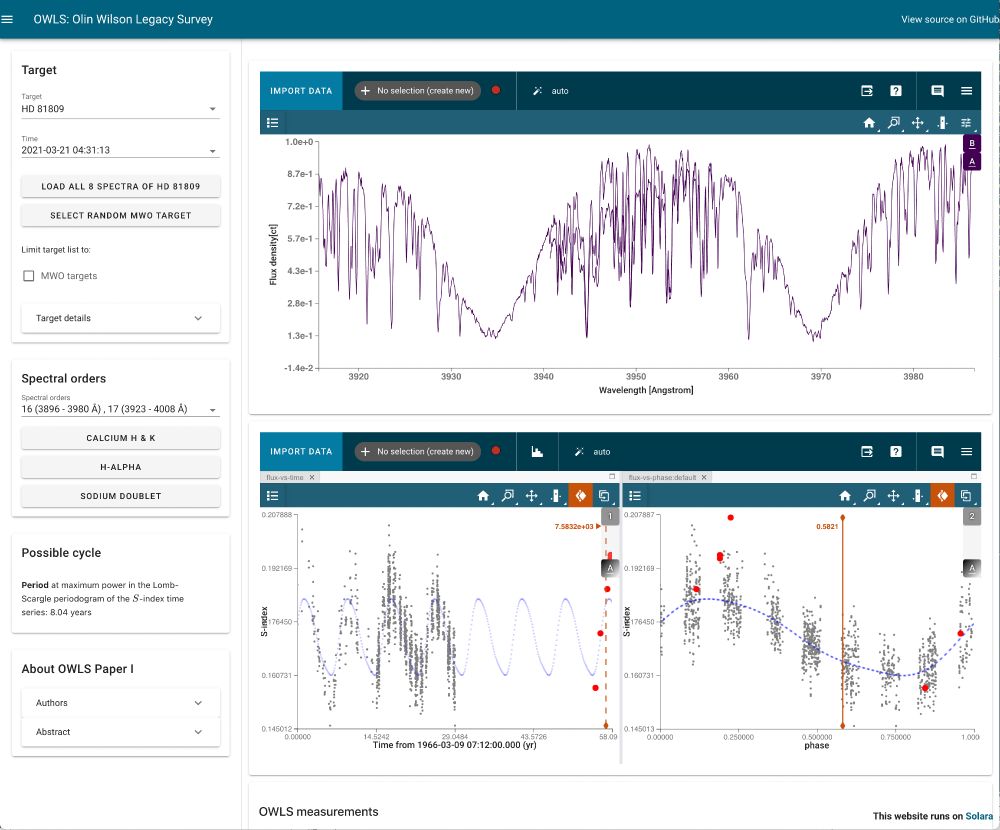
Interactive visualization tool for time-series spectra from the Olin Wilson Legacy Survey (OWLS).
OWLS is monitoring stellar magnetic activity cycles with optical echelle spectra of FGKM stars with the ARC 3.5 m Telescope at Apache Point Observatory (APO).
Until the spectra are available on MAST, here's an interactive visualization app for exploring OWLS spectra and the corresponding MWO HK Project chromospheric activity time series, when available. 🔭🧪 #stellarastro
Try it out: github.com/bmorris3/owl...
Powered by viz tools from @stsci.edu! ❤️
11.07.2025 11:05 — 👍 3 🔁 1 💬 1 📌 0
DPhil student at the University of Oxford. A stellar physicist pretending to be an exoplanet finder 🌟🪐🌟
astronomer | postdoc @ Netherlands Institute for Radio Astronomy (ASTRON) | planet-star interactions | time-domain astronomy
@ksvesq.bsky.social’s husband; father of daughters; professor @georgetownlaw.bsky.social; #SCOTUS nerd @CNN.com
Bio: www.law.georgetown.edu/faculty/stephen-i-vladeck
"One First" Supreme Court newsletter: stevevladeck.com
Book: tinyurl.com/shadowdocketpb
Atmospheric modeling and retrieval group
Max Planck Institute for Astronomy
🇸🇪 Exoplanet atmospheres + chemistry + formation at Uppsala University 🪐🔭 Also into astrobiology, policy, climate, equality/EDI, and scicomm ✨ (she/her) – linnboldtchristmas.wordpress.com
Data Science for All | cosmicds.cfa.harvard.edu
Online resources for astronomy, earth science, and data science education. Account is managed by the CosmicDS team at the Center for Astrophysics | Harvard & Smithsonian
The IceCube Neutrino Observatory is an array of optical sensors located in Antarctic ice that detects the presence of neutrinos.
https://icecube.wisc.edu/
We create innovative tools, technologies and solutions to further scientific research, contributing to the Department of Energy's mission to study new materials, address energy and environmental challenges, and advance fundamental science.
Dad, mountain man, heliophysicist. I lead NASA’s PUNCH mission and direct a team at SwRI. I like science, space, communication, and humans. Lowering barriers to science and promoting open science are priorities. My personal account; my opinions.
Four spacecraft, one instrument … imaging almost nothing at all.
PUNCH is a polarizing wide-field imager, distributed across four
orbiting spacecraft, to track space weather (and solar wind) across
the heliosphere. (Non-NASA account for the mission team).
Unlocking Knowledge, Opportunity, and Possibilities
Website: www.hsfoundation.org
Media Inquiries: DM or email communications@hsfoundation.org
Software Engineer at arXiv.org
LaTeXML developer.
creator of http://ar5iv.org
NancyRomanSci is managed by the Roman Science Centers and provides researchers with the most up-to-date information related to doing science with NASA's Nancy Grace Roman Space Telescope
Astro Physicist. Scientific Director @arXiv
Planets, Stars, Black Holes & Stuff. Whole Universes, If Needed.
Dynamics of Cats; To Say Nothing of The Dog.
Astrophysicist at Flatiron CCA & Stony Brook working on accretion and planet formation. Also Mr. Pisconti / Nico’s dad / hiker / Zwifter / (lapsed) photographer
Earthling, she/her, teacher of science, reader of books, player of board games, and more. Avatar by Corinne Roberts :)
Astronomy PhD candidate at Indiana University. (Exo)planetary scientist. Runner. Average Android enjoyer.
Software engineer at CDS. Taking care of HiPS pixels in Aladin project
Science journalist for NPR. I'm drawn to the transient and strange. I'm on Signal and welcome tips: nellgfb.11













